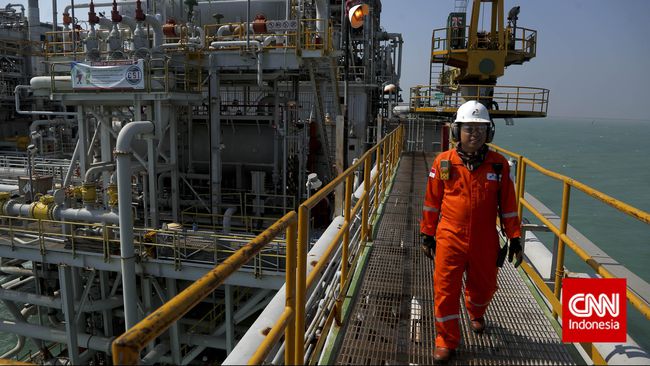(Thejakartapost.com : Tuesday, June 21 2016)
The recent decision to decrease state spending for cost recovery, a scheme that reimburses oil companies for exploration and production costs, may have adverse effects on the countrya��s crude oil production.
Last week, the House of Representativesa�� budget committee decided that the cost recovery of US$11.9 billion that the government had proposed for the revised state budget draft was too high, although it was already lower than $13.9 billion realized cost recovery last year.
Instead, $8 billion cost recovery was more appropriate to keep fiscal deficits in check as the government cuts a sizable portion of its budget due to difficulties in collecting state revenues amid a weak economy.
However, oil production is expected be higher at 820,000 barrels of oil per day (bopd), compared with the governmenta��s proposal of 810,000 bopd.
Pri Agung Rakhmanto of the ReforMiner Institute said that the Housea��s decision to slash the cost recovery was ill-advised as it guaranteed that oil and gas players would hold back on their exploration and production activities.
a�?The fact that it was suddenly cut to $8 billion means that some contractors will not get investment returns this year. If therea��s no cash flow then what will the investors use to conduct those activities?a�? he asked.
ExxonMobil Oil Indonesiaa��s vice president for public and government affairs, Erwin Maryoto, said the decrease in cost recovery was likely to affect their crude production. However, he acknowledged that he was unsure how large the effect would be.
Currently, ExxonMobil Oil Indonesia is revising its work plan and budget, which will include this yeara��s projected crude production, and will soon submit it to the Upstream Oil and Gas Regulatory Special Task Force (SKKMigas).
a�?Everything will be in the work plan and budget. As a contractor, we will just refer to that,a�? he said.
Zikrullah, deputy chairman of the SKKMigas, said the original cost recovery proposed had been set in order to allow for crude production up to 810,000 bopd.
Investors had already been discouraged from maximizing oil well development and maintenance, also known as workover, for the past two years due to volatile crude prices, and the lowered cost recovery was unlikely to encourage them, he explained.
a�?The main problem with the cost recovery is whether we pay the oil and gas cooperation contracts in the next period. This is what we are discussing as we compose the work plan and budget,a�? Zikrullah said.
He added that most projected crude oil production figures in existing work plans and budgets were based on the $11.9 billion figure.
Crude prices have suffered a period of depression for the past two years due to oversupply and lack of demand, leading to decreased activity in the oil and gas sector.
Benchmark West Texas Intermediate (WTI) sat at $48.77 per barrel on Monday afternoon, an 18 percent year-on-year drop from $59.68, according to Bloomberg. Fellow benchmark Brent Crude sat at $49.97 per barrel.
Last year, crude oil production reached 777,560 bopd, out of the targeted 825,000 bopd, with a realized cost recovery of $13.9 billion. Up to 50 percent of the cost recovery was allocated for production costs, 22 percent for exploration and oil field development costs and 13.7 percent for depreciation costs.

